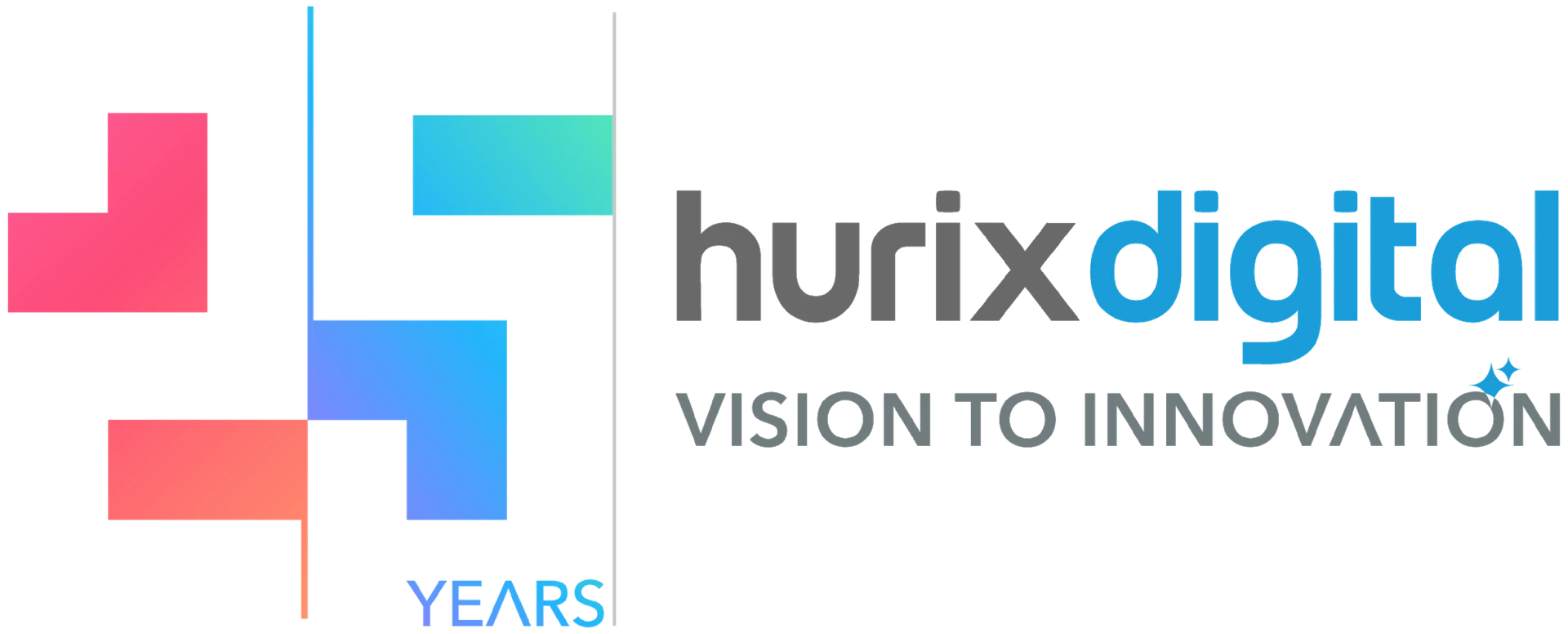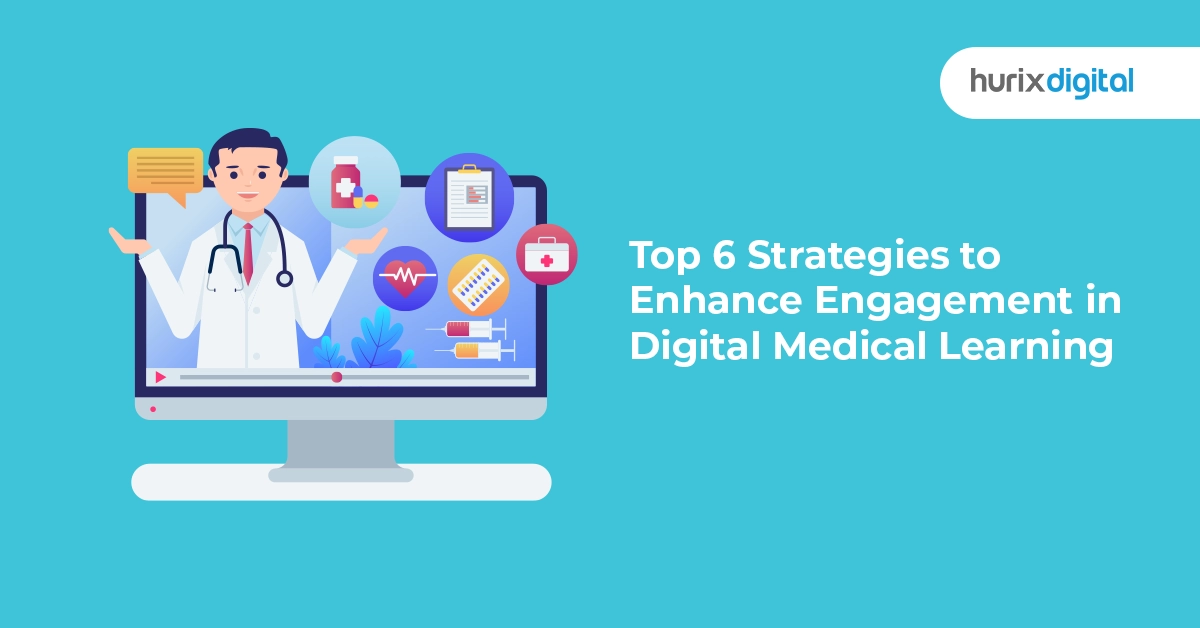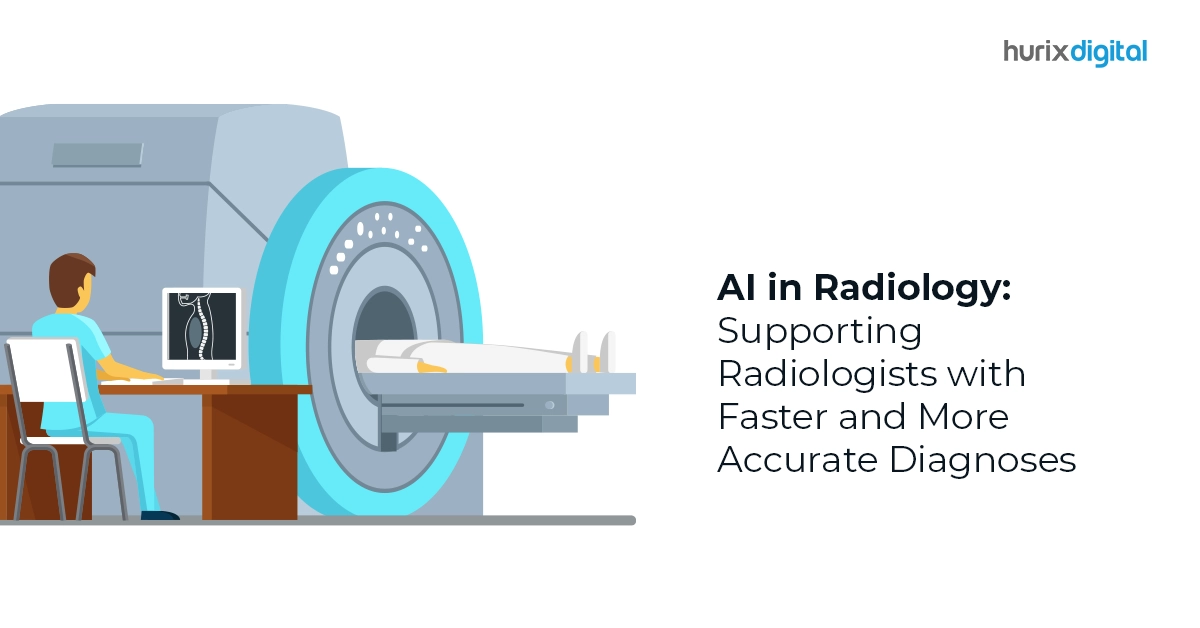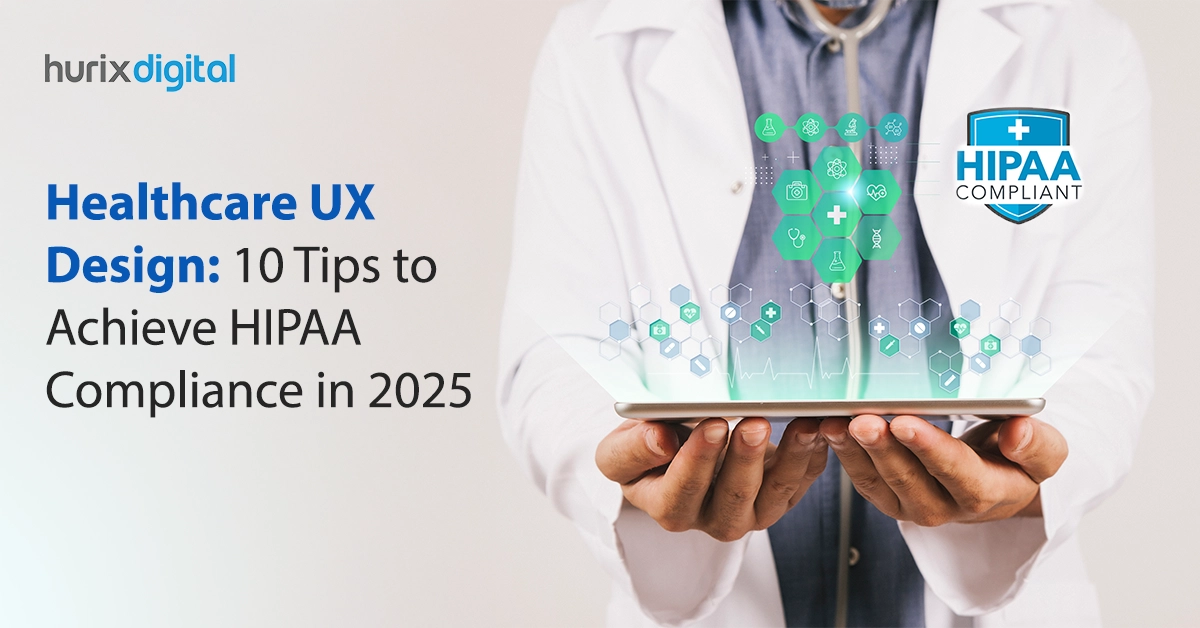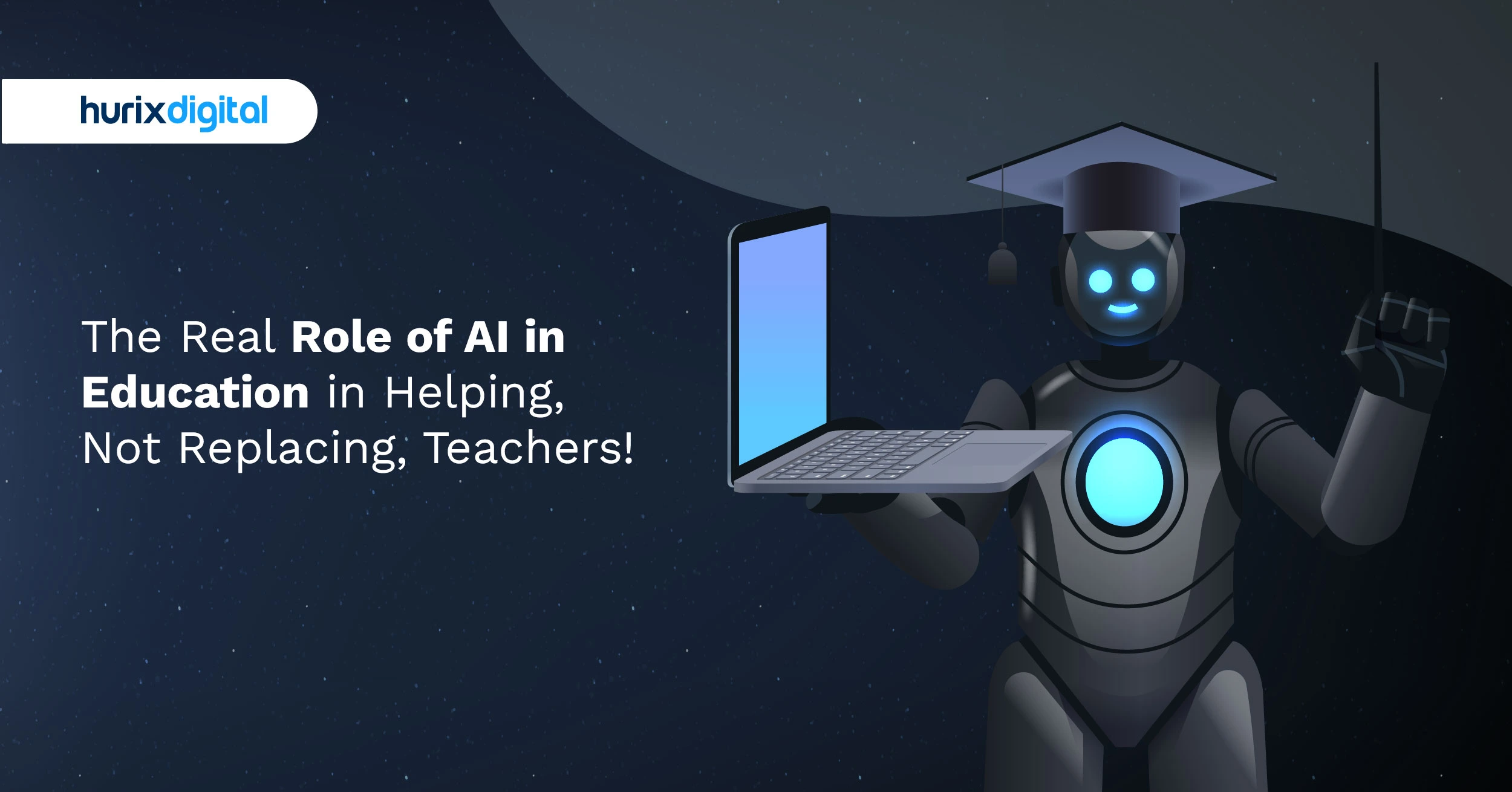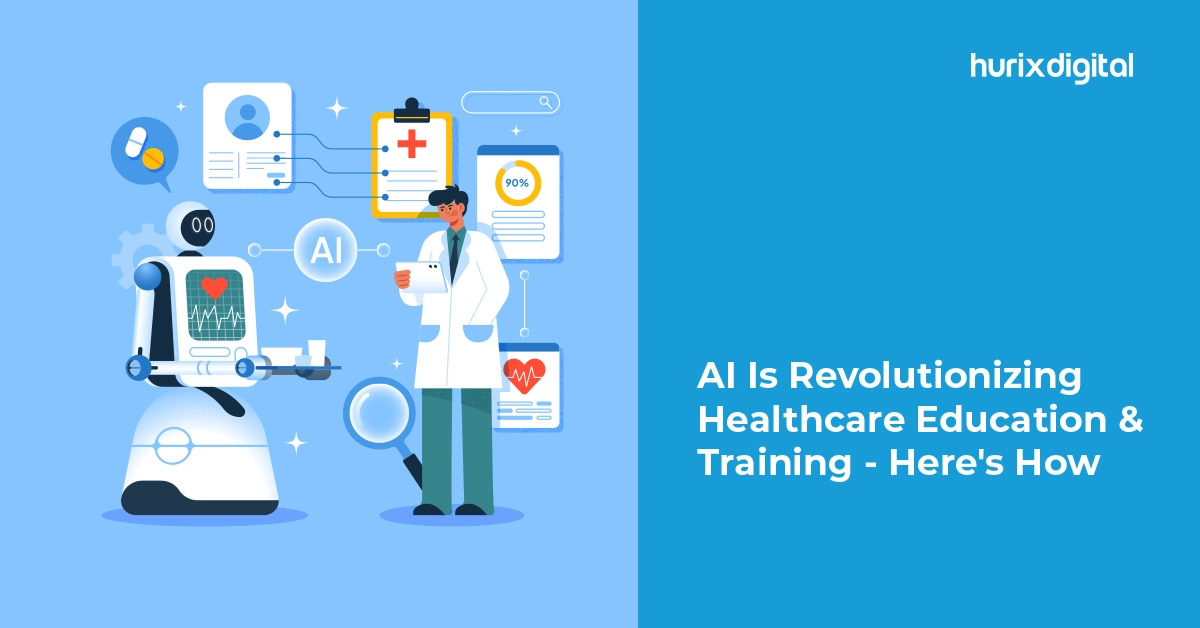
AI Is Revolutionizing Healthcare Education & Training – Here’s How
Summarize with:
The disruptive forces of AI and machine learning are transforming every nook and corner of the global economy, and healthcare is no exception.
Since the practice of medicine itself comes with hefty regulatory hurdles, healthcare education and training represent a gateway into this niche. For tech giants, there are few better ways to introduce the remarkable capabilities of AI to the broader medical community.
It is widely accepted that modern medical education is fraught with challenges and far from its ideal form. The unbearably long teaching methods haven’t changed in over a century, resulting in as many as 43% of physicians regretting their career choice.
Here’s a deep dive into the AI-powered revolution currently underway in healthcare training and education and the impact it is set to have on medical professionals and patients the world over.
Table of Contents:
How AI Is Revolutionizing Healthcare Education and Training
Recent advances in AI, alongside digital tech, augmented reality, and predictive analytics, have been a godsend for medical education. Over this decade, we expect to see certain changes with these trends.
1. Personalized Learning Environments
As AI continues to advance and converges with other technologies, the limitations that have long been part and parcel of traditional classroom education
The advances in AI and its growing convergence with other technologies are paving the way for personalized learning environments. This provides a way out of the drudgery of rote learning that has been part and parcel of traditional healthcare education all this while.
While this might sound cliche, one of the biggest problems of the modern education system indeed is the lack of addressing the varying needs, levels, capabilities, and weaknesses of different students. In the age of AI, however, this problem could be solved easily.
For instance, if a medical student is struggling with a particular concept, such as pharmacokinetics, the AI assessment system can definitely help. It will start crafting more questions based on that concept to help the student better understand the necessary concepts.
Also Read: Hybrid Curriculum Development in Healthcare Education
2. Virtual Simulations and Augmented Reality
Teaching practical clinical skills in a classroom setting has always been a challenge. Moreover, it has made medical education remarkably expensive and still rather ineffective for the most part and for most students who pass through it.
Virtual simulations and augmented reality stand to fundamentally alter the nature of clinical training for medical students in a controlled, risk-free environment.
This includes simulations that recreate complex surgical procedures to generative AI that can create scenarios to test medical knowledge for practical applications. In addition, there are a host of other applications that stand to unlock significant value for students and educators.
3. Automation of Administrative Tasks
Whether in medical schools or elsewhere, educators should focus their efforts on what they do best: teaching, mentoring, and developing students. Unfortunately, this is seldom the case, with educators often being forced to contend with several other repetitive administrative tasks that eat into their time.
Enter AI. With its remarkable learning capabilities and increasingly powerful tools and extensions, many tasks can be easily automated with limited ongoing time and effort. This includes the grading of papers, the tracking and benchmarking of student scores, and more.
4. Enhanced Access to Educational Resources
It’s no secret that medical education today is wildly expensive and out of reach for many aspirants.
This creates a wide gulf between the haves and have-nots of society. It only gets wider when considering other educational resources, such as textbooks, online mock tests, and new simulators for medical students.
Nonetheless, with the advent of AI, the cost of producing these educational resources will drop over the coming years. Its benefit will be transferred to students over time.
Whether it is quizzes, summarized notes, or illustrative videos, everything will be more accessible going forward.
5. Predictive Analytics in Learning Outcomes
When combined with the latest advances in analytics, artificial intelligence in medical training can help predict outcomes, which can be an absolute game-changer.
By analyzing data from a variety of sources, AI can predict which students are likely to struggle with certain topics. This allows educators to plan early interventions and dedicate specific resources to these particular students.
Similarly, predictive analytics can help plan curriculum and teaching methods to enhance student outcomes substantially. Instead of just winging it or adopting a trial-and-error approach, this offers a much better alternative that adds the most value to students.
6. Continuous Learning and Professional Development
Continuing medical education (CME) is very important for medical professionals. It helps professionals and practitioners stay updated on the latest happenings in their field, and the advanced tech and innovations to best aid their patients.
However, this is often neglected, given the effort involved, with doctors being forced to miss a couple of days at work to travel to universities to undergo certain workshops. With the use of AI, the entire process can be condensed into bite-sized chunks and offered entirely online.
This is again a case of AI successfully converging with a range of other technologies to disrupt existing systems and processes. In the end, it only means that we are minimizing inefficiencies and unlocking more value for medical professionals, educators, and patients.
7. Feedback and Evaluation
The ability of AI to provide immediate feedback is invaluable in a learning environment. AI-driven systems can assess a student’s performance in real-time, providing instant and constructive feedback.
This continuous loop of performing, receiving feedback, and improving helps students refine their skills more effectively.
At the same time, automating this process helps educators save plenty of time and effort. They can utilized for teaching, mentoring, and planning activities for students.
AI can also go the extra mile when it comes to evaluating and providing feedback, such as by pinpointing the exact areas where students can improve, identifying resources to build on weak areas, and more. All of these are simply not possible for an educator to do for each individual student.
Also Read: Generative AI in Education: Know Meaning, Benefits & Challenges
Conclusion
AI in healthcare education technology is no longer a futuristic concept; it’s here, and it’s having a massive impact.
By personalizing learning, enhancing accessibility, and facilitating real-world applications through simulations, AI is not just improving educational outcomes. It is also preparing a new generation of healthcare professionals to be more adept and ready for the evolving challenges of the medical field.
The integration of AI into healthcare education promises to produce more competent and confident professionals. It ensures that the healthcare industry remains at the forefront of technological advancement.
As we continue to embrace these innovations, the future of healthcare education looks not only promising but revolutionary. If you’re an educator or course creator looking to get in on this trend, consider working with Hurix Digital, an eLearning consultant with years of experience in this space. For further details, feel free to Connect with us today.
Summarize with:

Senior Vice President – Business Development
at Hurix Digital, with over 25 years of experience in EdTech and workforce learning. He excels in business development, customer relationship management, and scaling digital learning solutions, driving global growth through innovative content, simulations, and AI‑driven training offerings
 A Space for Thoughtful
A Space for Thoughtful 